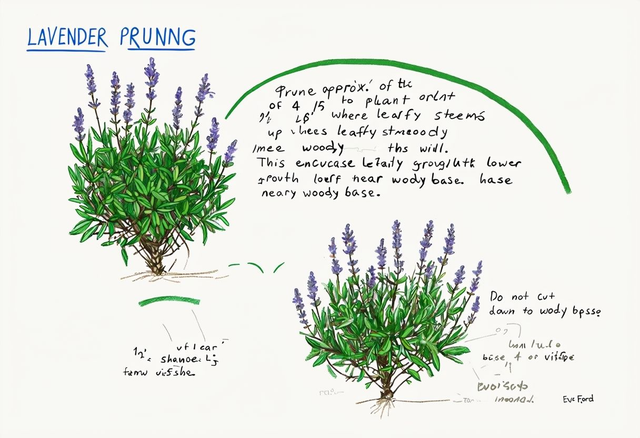
How and When to Prune Lavender
Paula
- 0
- 13
A structured guide for maintaining healthy, flowering lavender plants in home gardens.
🔍 DCR – Déduction – Clarification – Reformulation
Clarification:
Pruning lavender is not optional—it’s essential for keeping the plant healthy and promoting repeated flowering. The article explains this in the context of North American seasonal gardening.
Déduction:
Pruning prevents lavender from becoming woody and sparse over time. It also mitigates risks of fungal growth, especially in humid regions.
Reformulation:
This guide provides a seasonal, step-by-step overview on how to prune lavender without damaging the plant’s woody base, with practical advice suited to temperate and colder climates.
🧩 AFQ Structure
✅ AVANTAGES (Why Prune Lavender?)
- Stimulates Healthy Growth: Pruning encourages new stems and leaf development.
- Promotes Repeat Flowering: Removing old blooms and shaping the plant can trigger more blooms later in the season.
- Prevents Disease: Removing dead or decaying material helps reduce moisture retention and the risk of mold or rot.
- Improves Shape and Lifespan: Maintains a compact, rounded form and delays woodiness.
🛠️ FONCTIONS (How to Prune Effectively)
📅 When to Prune
- Early Spring (March–April):
→ Light pruning to remove winter damage.
→ Trim no more than one-third of plant height.
→ Avoid cutting into the woody base. - After Bloom (Late Spring to Summer):
→ Deeper pruning after first flower flush.
→ Cut back by one-third, just above green foliage.
→ Encourages second bloom cycle and denser growth.
✂️ How to Prune
- Tools:
Use clean, sharp hand pruners or garden scissors. - Method:
Cut above the woody section—target green, flexible stems. - Shape:
Aim for a rounded, dome-like shape. This helps the plant resist snow collapse and maintains visual appeal. - Spent Flowers:
Deadhead regularly to extend blooming and prevent seed formation.
❓ QUESTIONS (What Gardeners Might Ask)
- Can I prune lavender in the fall?
→ Generally not recommended. Pruning in fall can stimulate new growth that is vulnerable to frost. - What happens if I cut into the woody base?
→ Lavender does not regrow well from old wood. Cut above where you see green leaves. - How do I know if I’ve pruned too much?
→ If no green shoots remain on a stem segment, you’ve likely gone too far. Always leave some green growth. - Is pruning necessary for all lavender types?
→ Yes, though some cultivars (like Lavandula angustifolia) respond better than others. Tailor your technique to the specific variety. - What if my lavender is already woody?
→ Light shaping is still helpful, but full rejuvenation may be limited. Consider propagating new plants from healthy cuttings.
🌱 Additional Notes for North American Growers
- Sunlight:
Full sun is essential. Minimum 6–8 hours/day. - Soil:
Must be well-draining. Sandy or rocky soil preferred. Add gravel to improve drainage if needed. - Watering:
Lavender tolerates drought. Water only when the soil is dry several inches down. - Winter Protection:
In USDA zones 5–7, protect with mulch or a breathable cover. Avoid heavy pruning before frost.


